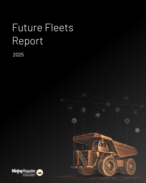With the Kestrel Mine Extension project continuing, Rio’s 80%-owned longwall operation in Queensland’s Bowen Basin is performing far stronger in 2010 than last year and in line with increasing demand for coking coal.
The mine produced 1.16 million tonnes of hard coking coal in the June quarter, up almost 9% from the previous three months and 53% better than the tougher times in the corresponding period a year ago.
Thermal coal production also reached 228,000t, a 27% increase for the June quarter over the March quarter in 2010 and up 51% year-on-year.
Rio attributed the stronger Kestrel results to good plant reliability and higher processing rates.
The giant Clermont open cut mine in the state officially kicked off in the recent quarter.
This mine uses a 13.3km conveyor to carry the coal to the Blair Athol mine to rail it out.
Clermont produced 529,000t of thermal coal in the June quarter – far below the 2.2Mt produced at the Blair Athol mine it will eventually replace.
But by adding the production together from both mines, the 2.73Mt of production in the recent quarter is still 24% above the sole output of 2.14Mt at Blair Athol in the previous three months.
Rio’s Hail Creek open cut mine increased hard coking coal production by 46% from the March quarter to 1.47Mt in the June quarter.
The combined output of Kestrel and Hail Creek gave Rio 2.4Mt of the commodity in the recent quarter – up 29% from the previous three months as mining concentrated on a higher yielding seam.
Rio was also ahead for total production from its other interests in coal mines in Queensland, New South Wales and the US.
The other coal production, mainly consisting of thermal coal, reached 16.67Mt in the June quarter, 12% above the output of the previous quarter.
Further investment
Over to Rio’s key Pilbara iron ore operations, the high-tech Operations Centre was launched less than three weeks ago to remotely manage mining and logistics from Perth.
Rio is also planning to spend $US200 million on further expanding its Pilbara iron ore operations.
Going back to its core mining focus, Rio managed to complete $3.6 billion of divestments from its Alcan Packaging, global tobacco and various food divisions in the past half-year to take the total divestment savings to more than $10 billion since February 2008.
Rio chief executive Tom Albanese said growth was back on the agenda now that much of the RSPT uncertainty had been removed.
He said Rio was driving most of its operations at close to capacity and 2010 continued to shape up well.
But he also touched on some of the economic growth concerns that are affecting commodity prices.
“Markets for most of our products are strong and the overall long-term demand outlook is positive.
“But in recent weeks, fears about a possible double-dip recession in OECD countries and a slight slowdown in Chinese growth have led to some weakening in sentiment. We believe this pattern of volatility in the global economy is set to continue.”
Rio shares closed up 83c to $67.38 yesterday.
























